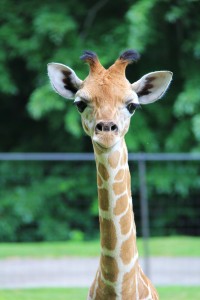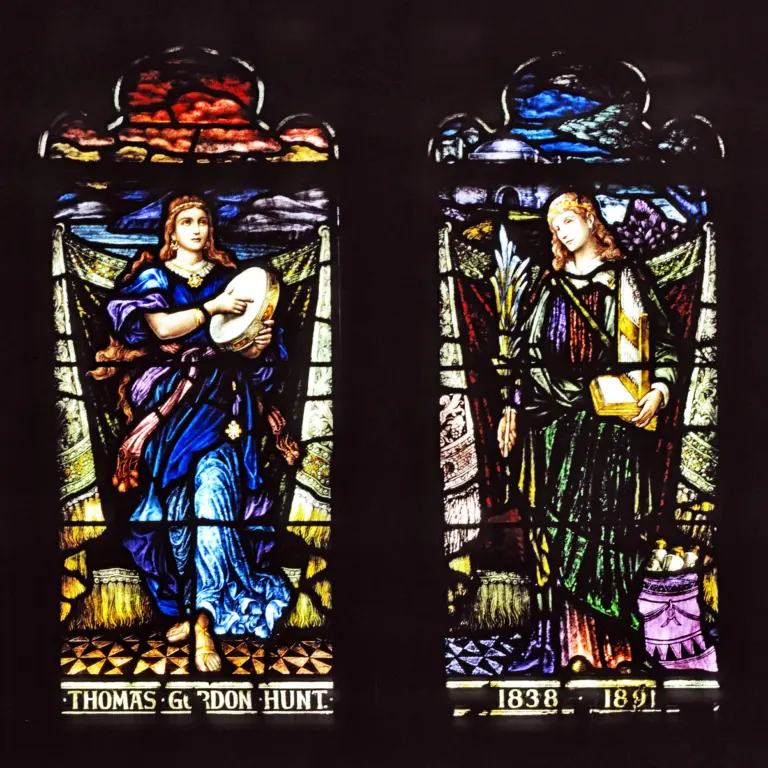
While babies are a fairly routine phenomenon in the bedroom community of Greenwich, the birth of Zaffi, a rare Rothschild Giraffe, is a special event. This past May, Zaffi was born at the LEO Zoological Conservation Center, an off exhibit accredited breeding reserve in the backcountry of North East Greenwich. Zaffi, who was born happy and healthy, is the first of three giraffes to be born at the center this summer. The LEO Zoological Conservation Center is a private non-profit foundation, located next to Lionshare Farm.
Standing and nursing within 40 minutes, Zaffi was born at 5 foot 8 inches.
On average, the gestation for giraffes is around 15 months, with labor taking a little under an hour. This too was the case with Zaffi and his mother, Petal. Even with experts on call, Petal, at eight years old, “is a tremendous mother and no intervention was needed [for the birth],” according to LEO’s Development Director Dani Raske. Zaffi has adapted to his Connecticut home well and can be found “chasing butterflies and finding his legs in our savanna”.
Zaffi’s unique name can be accredited to one of LEO’s generous benefactors. Tracing the origin of the name “giraffe,” leading to its Arabic root, zarafa, led to the creation of the name. Zaffi is derived from zarafa, which directly translates to “fast-walker.” LEO is a nonprofit group that receives no public funding; it depends on the help of their benefactors, like the ones who named Zaffi.
LEO Zoological Conservation Center, located on the Greenwich/Stamford border, is focused on sustainable conservation with a particular interest in breeding species at risk. For the center, the birth of Zaffi is a huge success. “LEO is unique from other zoological institutions and fills a dire and growing need for an off-exhibit breeding center by providing vast, natural and quiet habitats uninterrupted by the constant pressure of human crowds,” says Raske, “This is a very different environment as compared to public zoos that can have millions of visitors each year. By offering animals a stress free environment, we have been able to achieve tremendous success in breeding.”
This success is to not be taken lightly.
Zaffi is a member of one of the most endangered giraffe subspecies. “The Rothschild Giraffe is reported to have fewer than 670 animals left, the primary cause is human development in wild habitats,” reports LEO Founder and Director Marcella Leone, “The important thing about the giraffe subspecies is that they are an umbrella species. By protecting all the giraffe subspecies, we’re protecting to many other animals and habitats that are vital for the balance of nature”.
Not only do giraffes play a vital role in nature, but they themselves are “a magnificent species,” says Raske. The tallest terrestrial animal, giraffes also have the highest blood pressure of any other mammal. Their twenty-five pound heart pumps sixteen gallons of blood. This massive heart is the largest of any land animal, along with their eyes. Mothers give birth standing up, in order to protect against predators. Newborns, therefore, must survive a six-foot drop to the ground. After that, more than half the calves fall prey to predators within the first six months of life. It is clear that for their continued survival, some human intervention is needed.
LEO makes sure to take care of these endangered giants. “At LEO, we make sure that our giraffe herd has enough room to stretch their legs in the summer AND winter; when we’re not in season, our giraffes have a large winter barn and indoor paddock for daily turn out to ensure their mental and physical needs are met all year-round,” says Leone, “We have various enrichment devices that encourage natural behaviors, for example, we have tall suspended hay balls and salt licks to simulate feeding from trees. Giraffes, like any hoofstock, need proper hoof maintenance as well. Our herd receives ‘pedicures’ by our veterinarian seasonally.”
Not only do these giraffes receive excellent housing, but they also receive excellent care. According to both Raske and Leone, “Our keepers work very closely with our animals in order to best care for them. We are working with our giraffes through operant conditioning (clicker training). Also, we use training methods for our giraffes for visual recognition. Giraffes are known for their good vision and are known as the sentinels of the savanna as they watch for danger.”
These Sentinels face a silent extinction.

If you would like to learn more or reach out to the LEO Conservation Center, you can visit their website at www.leozoo.org, email them at info@LEOsoo.org, as well as call their office at (203) 552-0677. The center limits human interaction, for the benefit of their animals. However, LEO still offers limited safari tours, youth programs, as well as family visitation days. You can still follow LEO through Facebook, Instagram, and Twitter (@LEOConservation) to see all of their animals, including Zaffi!




